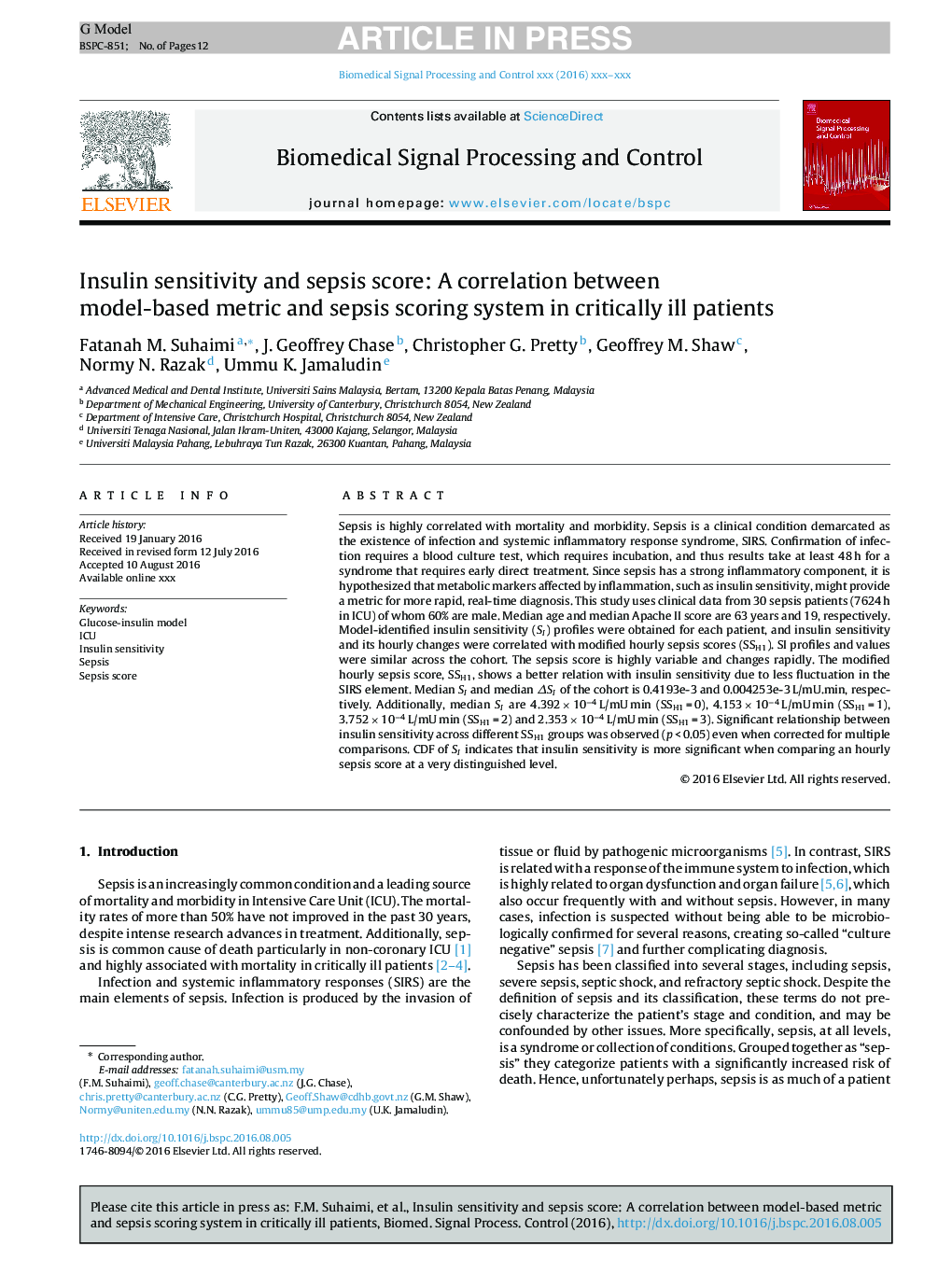| Article ID | Journal | Published Year | Pages | File Type |
|---|---|---|---|---|
| 4973521 | Biomedical Signal Processing and Control | 2017 | 12 Pages |
Abstract
Sepsis is highly correlated with mortality and morbidity. Sepsis is a clinical condition demarcated as the existence of infection and systemic inflammatory response syndrome, SIRS. Confirmation of infection requires a blood culture test, which requires incubation, and thus results take at least 48 h for a syndrome that requires early direct treatment. Since sepsis has a strong inflammatory component, it is hypothesized that metabolic markers affected by inflammation, such as insulin sensitivity, might provide a metric for more rapid, real-time diagnosis. This study uses clinical data from 30 sepsis patients (7624 h in ICU) of whom 60% are male. Median age and median Apache II score are 63 years and 19, respectively. Model-identified insulin sensitivity (SI) profiles were obtained for each patient, and insulin sensitivity and its hourly changes were correlated with modified hourly sepsis scores (SSH1). SI profiles and values were similar across the cohort. The sepsis score is highly variable and changes rapidly. The modified hourly sepsis score, SSH1, shows a better relation with insulin sensitivity due to less fluctuation in the SIRS element. Median SI and median ÎSI of the cohort is 0.4193e-3 and 0.004253e-3 L/mU.min, respectively. Additionally, median SI are 4.392 Ã 10â4 L/mU min (SSH1 = 0), 4.153 Ã 10â4 L/mU min (SSH1 = 1), 3.752 Ã 10â4 L/mU min (SSH1 = 2) and 2.353 Ã 10â4 L/mU min (SSH1 = 3). Significant relationship between insulin sensitivity across different SSH1 groups was observed (p < 0.05) even when corrected for multiple comparisons. CDF of SI indicates that insulin sensitivity is more significant when comparing an hourly sepsis score at a very distinguished level.
Keywords
Related Topics
Physical Sciences and Engineering
Computer Science
Signal Processing
Authors
Fatanah M. Suhaimi, J. Geoffrey Chase, Christopher G. Pretty, Geoffrey M. Shaw, Normy N. Razak, Ummu K. Jamaludin,
